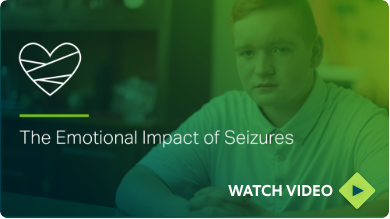Many Experience Similar Feelings About Their Seizures
Maurene
A determined career mom with episodes of frequent seizures
Maurene
A determined career mom with episodes of frequent seizures
Many Experience Similar Feelings About Their Seizures
You’re not alone

You’re not alone
Nearly 3.5 million people are living with epilepsy in the US. Many of them share anxious feelings and worry about their seizures.
*Results from a survey of 259 people with epilepsy.
Anxious feelings around seizures are driven by real experiences
When seizures are left uncontrolled, the physical and emotional impacts may be felt immediately and continue to develop over time.
Things you may experience immediately
- Brain fog, confusion, or embarrassment
- Anxious or depressed feelings
- Physical harm you can see like burns, bruises, or bleeding
- Unseen physical harm like broken bones, sprains, concussions, or bleeding in the brain
- Choking, tongue injuries, or tooth fractures
- Loss of bladder or bowel control
Things that may develop over time
- Learning problems or trouble speaking
- Memory issues
- An increase in the frequency or severity of seizures, including status epilepticus†
- Defined as a seizure with 5 minutes or more of continuous seizure activity or recurrent seizure activity without recovery between seizures.
Other things seizures can take from you*
Ability to work or do other daily activities
Time for work and school
Ability to drive
Relationships with friends and family
Confidence
*Results from a survey of 259 people with epilepsy.
Understand how to treat as many seizures as possible with 2 types of treatment as different parts of a seizure management plan.












